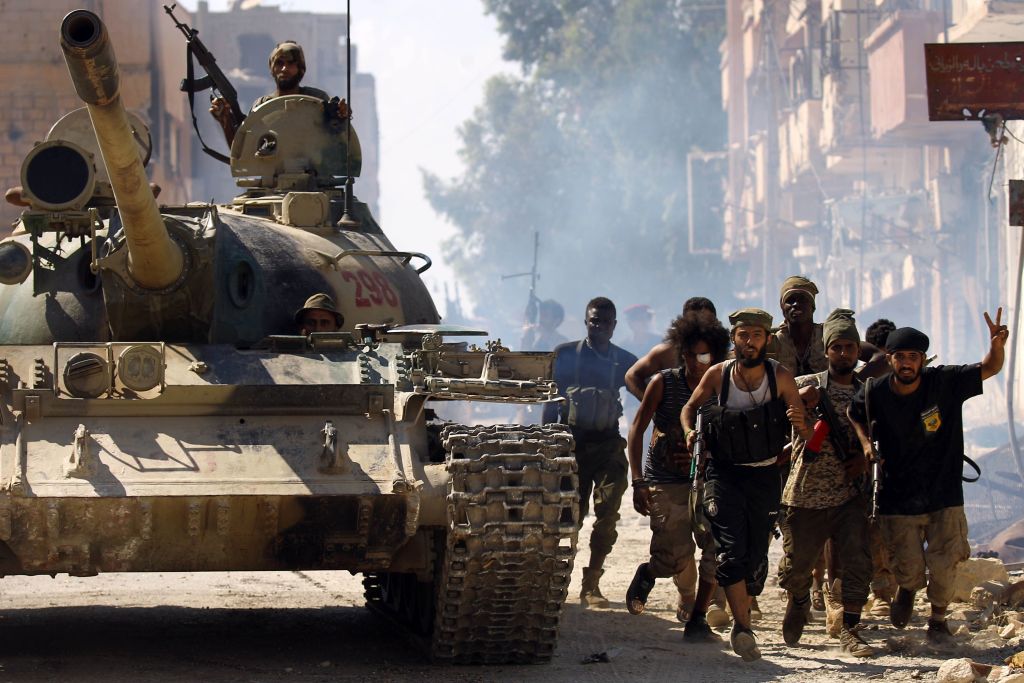Russia has expanded its military presence in Libya by transferring personnel and equipment to the Maaten al-Sarra base near the borders with Chad and Sudan, an Italian news agency reported. The base had been abandoned since 2011.
In December, Russia deployed Syrian soldiers to reestablish the base, from which Moscow can directly supply Burkina Faso, Mali and Sudan, the news agency Nova reported. Russian technicians and Syrian troops have restored runways and warehouses at the base, which still needs new housing, warehouses, control towers and security fences.
A major military convoy aligned with Field Marshal Khalifa Haftar, who leads the Libyan National Army, recently headed to Maaten al-Sarra to secure the area and protect routes that supply Sudan with weapons and fuel from the northeast Libya port of Tobruk. Haftar seeks to overtake the internationally recognized Government of National Accord (GNA).
These developments are consistent with Russia’s strategy to position Libyan military bases as a central hub for Africa Corps, the Russian mercenary outfit that replaced the Wagner Group. Russia has long supported Haftar, who is accused of sending supplies to Sudan’s paramilitary Rapid Support Forces in its grinding civil war with the Sudanese Armed Forces.
“Given its strategic location, the rehabilitation of Maaten Al-Sarra Airport likely fits into Russia’s broader plan to enhance its influence in Africa through Libya,” according to open-source intelligence platform EekadFacts.
Acquiring the base is part of the Kremlin’s efforts to establish a trade and military corridor from the Mediterranean into Africa. Russia has also strengthened its operations at Libyan military bases in eastern al Khadim, central al Jufra, northwestern Brak al-Shati and north-central Al Qurdabiya. These bases hold an array of military equipment, including air defenses, MiG-29 fighter planes and drones. They are operated by Russian military personnel and mercenaries.
However, analysts say Russia’s efforts to increase its military might in Libya could further destabilize North Africa and the Sahel region.
“Libya serves as a pivotal location for Russia’s expanding operations in Africa, opening up opportunities for further access to countries such as Sudan, Mali, Chad, and the Central African Republic,” Miral Sabry AlAshry, co-lead for the Middle East and North Africa at the University of Sheffield’s Center for Freedom of the Media, wrote in Eurasia Review.
Moscow also is fostering relations with tribal communities in the southern region of Fezzan, a desert expanse that extends toward Chad and Niger. Russia has forged alliances with local tribes in border areas to strengthen its strategic position and access gold mines controlled by Tebu tribes in the Kalanga mountains, according to Nova.
Russian mercenaries were deployed to Libya as early as 2018 and fought for Haftar during the war on Tripoli, which was backed by Turkey. Russia supplied Haftar with Wagner fighters, attack planes and arms during the battle that lasted more than six years. Although Moscow’s war with Ukraine is Russian President Vladmir Putin’s main military challenge, there are still 800 to 1,200 Russian mercenaries in Libya, many controlling oil production facilities and smuggling networks, as well as key ports, giving Moscow dependable logistics hubs, according to the Atlantic Council.
“Their continued presence illustrates the Kremlin’s conviction that North Africa and the Middle East is a region of vital importance, with enormous untapped resources that could help Russia’s economy in the long-term,” Chiara Lovotti, an Italian Institute for International Political Studies research fellow, and Alissa Pavia, associate director of the Atlantic Council’s North Africa Program, wrote on the Atlantic Council’s website.
Russia also has a growing diplomatic presence, including in Tripoli, where the GNA is based, according to Frederic Wherey, senior fellow of the Middle East program at the Carnegie Endowment for International Peace. The nonmilitary effort is strengthening Moscow’s influence in the economic, energy and political realms, Wherey added.

